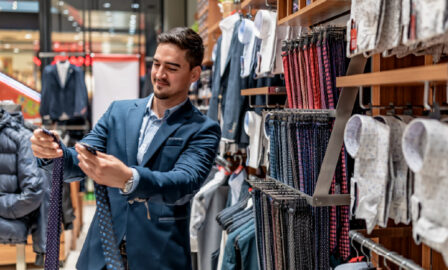Lessons Learned From A Decade as a Retail Consultant
With almost a decade under my belt as a retail consultant working with global retailers, it’s wild to look back at how the industry has evolved since the early 2010s. Some things have changed…. Amazon has elevated from #100 on the Fortune 500 list in 2010 to #2 in 2020; some things have stayed the same… Walmart is still #1 on the same list. We’ve witnessed almost 4 percent annual growth in the industry since 2010, and while there have been rumors of a retail apocalypse, it’s clear that this industry is resilient, agile, and poised to emerge from the COVID-19 pandemic ready to conquer its latest series of challenges. It’s hard to narrow down the list of things learned from the past decade, but there are a few key themes that I’ve learned from my time as a retail consultant.
Agility Fueled by a Sense of Urgency
Perhaps my favorite part about working as a retail consultant is the fast-paced nature of the industry. If other industries are semi-trucks that need a long lead time to turn or come to a stop, retail is a sports car; able to turn on a dime and speed off in a new direction. Realistically, this makes sense as being so close to the consumer forces retailers to constantly adapt to ever-changing shopper preferences. This was never more evident as when COVID-19 broke out earlier this year – while much of retail had to close down, stories of record-breaking in-store or curbside pickup implementations popped up around the country. With the barriers to entry being lower than ever with the rise of DTC and online retail, retailers have the sense of urgency that forces them to always remain relevant. This diligence not only makes the industry exciting – it prevents much of the stagnation that can exist in other industries.
Not All Bets Need to be Big to Matter
While big technology bets are still important – retailers need to know they have a good foundation when it comes to eCommerce, point of sale, merchandising, order management, merchandising, and reporting & analytics systems – not every bet needs to be a massive implementation. We’ve talked about cool tech for years – things like AR and VR, clienteling, smart dressing room mirrors, dynamic shelf labels, etc – none of them are game breakers or are going to make your competition obsolete. However, each, in their own way, can set you apart from your competition. Paired with other complementary experiences that make sense for an individual brand these can improve the relationship with your customers and make the difference between a one-time purchase and a loyal customer.
Don’t Be Afraid to Fold a Losing Hand
Conversely, not all “shiny new tech” projects make sense for every brand. It’s okay to try something out and realize that it doesn’t fit what you’re trying to do as a brand, or that it didn’t resonate with the customer in the way in which you hoped. “Failing fast” is not a foreign concept to many industries, but in one which moves as fast as retail, it’s vital to not hold too long onto an idea that didn’t work. Frequent A/B testing online allows for timely results of new digital functionality, and a similar approach can be taken in-store to test new experiences and determine which are ready for rollout and which need to be left behind.
Complex Moves Take Time
Being able to move nimbly and react quickly doesn’t mean that every move needs to be sudden, or that every payoff will be immediate. The reality is that the biggest moves take the longest time, and sometimes the payoff is not immediate. Omnichannel is still being talked about because it’s not easy, and it takes time to transform from a beginner to an expert. Companies that recognize that the first step is putting in a foundation, and then adopting a practice of continuous improvement, will put themselves in a better position than those that overreact to not hitting lofty goals right out of the gate.
Customer First Understanding
This may seem like an obvious statement, but retailers need to understand their customers. This doesn’t just mean knowing their customer demographics though, it means truly understanding their rituals, their preferences, and their general lifestyle. This laser focus on the customer allows the retailer to better understand how they fit in to it, how they can better message the customer, and how they can become more than just a product to their customer but a bigger part of their identity. The emergence of data and analytics has helped retailers get better at this – the best have moved from simply collecting as much data as possible to being purposeful with which data they collect so that it can serve a distinct purpose in making the relationship tighter with the customer. It also allows retailers to focus on the right technology to engage with their customer, rather than adding technology simply for technology’s sake.
The last decade as a retail consultant has been a wild ride, and as we look forward to the next decade there’s only one certainty: retail will continue to reinvent itself to stay relevant and meet the needs of its customers. I, for one, am excited to see this next stage of evolution and follow those that lead the charge.



